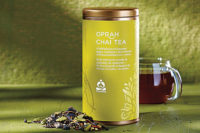As the old saying goes, only two things are absolute in life: death and taxes. As many of us just finished the hustle and bustle of tax season, I think we can add another item to today’s list of absolute certainties, and that’s the discussion of obesity.
It seems like the national consumer media is constantly reporting new data and research surrounding this health topic. It’s understandable why the topic is so relevant, with the Centers for Disease Control and Prevention (CDC) reporting that 35.7 percent of the U.S. adult population is obese, and 17 percent of children and adolescents between the ages of 2 and 19 also fit the categorization. For an adult, a body mass index (BMI) of 30 or higher is considered obese, while weight status for children is determined by age- and gender-specific percentiles for BMI because of various body compositions, the CDC says.
Websites such as cdc.gov and choosemyplate.gov offer a number of healthy nutrition tips to help consumers break away from obesity and the associated health risks. Among those tips, consumers seem to be taking notice of protein to solve their weight concerns.
According to The NPD Group’s “Protein Perceptions and Needs” report, 78 percent of U.S. consumers state that protein contributes to a healthy diet, and more than half of adult consumers indicate a desire to incorporate more protein into their diets. As consumers search for more protein, it looks like they are split on where to source these ingredients. Roughly half of consumers named non-meat sources as the best source for protein, while the other half lists meat and fish, NPD food and beverage research indicated.
“Consumers want more protein in their diets,” said Harry Balzer, chief industry analyst and author of “Eating Patterns in America,” in a statement. “In fact, the only issue that U.S. adults are now checking on the nutrition facts label on the back of foods and beverages is the amount of protein. While our interest in protein is growing, we’re looking for alternatives to meat. Many of us are looking to lower the cost of our protein sources, and animal meat is generally more expensive than plant-based protein, which explains the growth in Greek yogurt and other alternate protein sources.”
Another consumer concern that the market research firm found was an understanding of the correct daily recommended value. “It is important for food and beverage marketers to highlight wherever possible that their products are a good source of lean protein,” said Darren Seifer, NPD food and beverage industry analyst, in a statement. “In fact, the protein study we conducted showed certain messages about protein resonated more than others. The study also found nearly half of primary grocery shoppers have purchased protein-enriched foods, and many are willing to pay, or have already paid, a premium for these products.”
To learn more about the beverage industry’s position in the protein market, check out Beverage Industry’s Category Focus article next month on sports and protein drinks.





